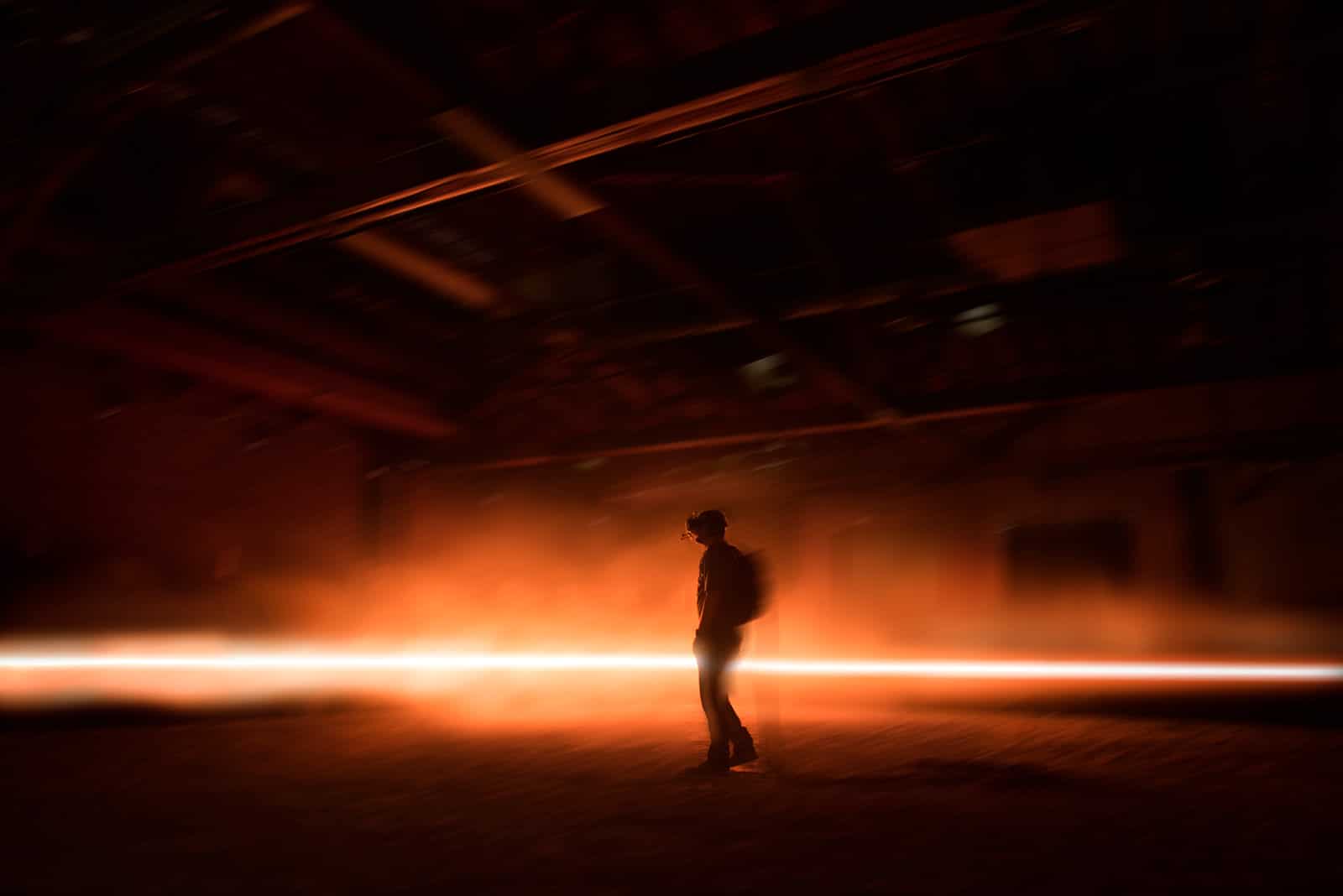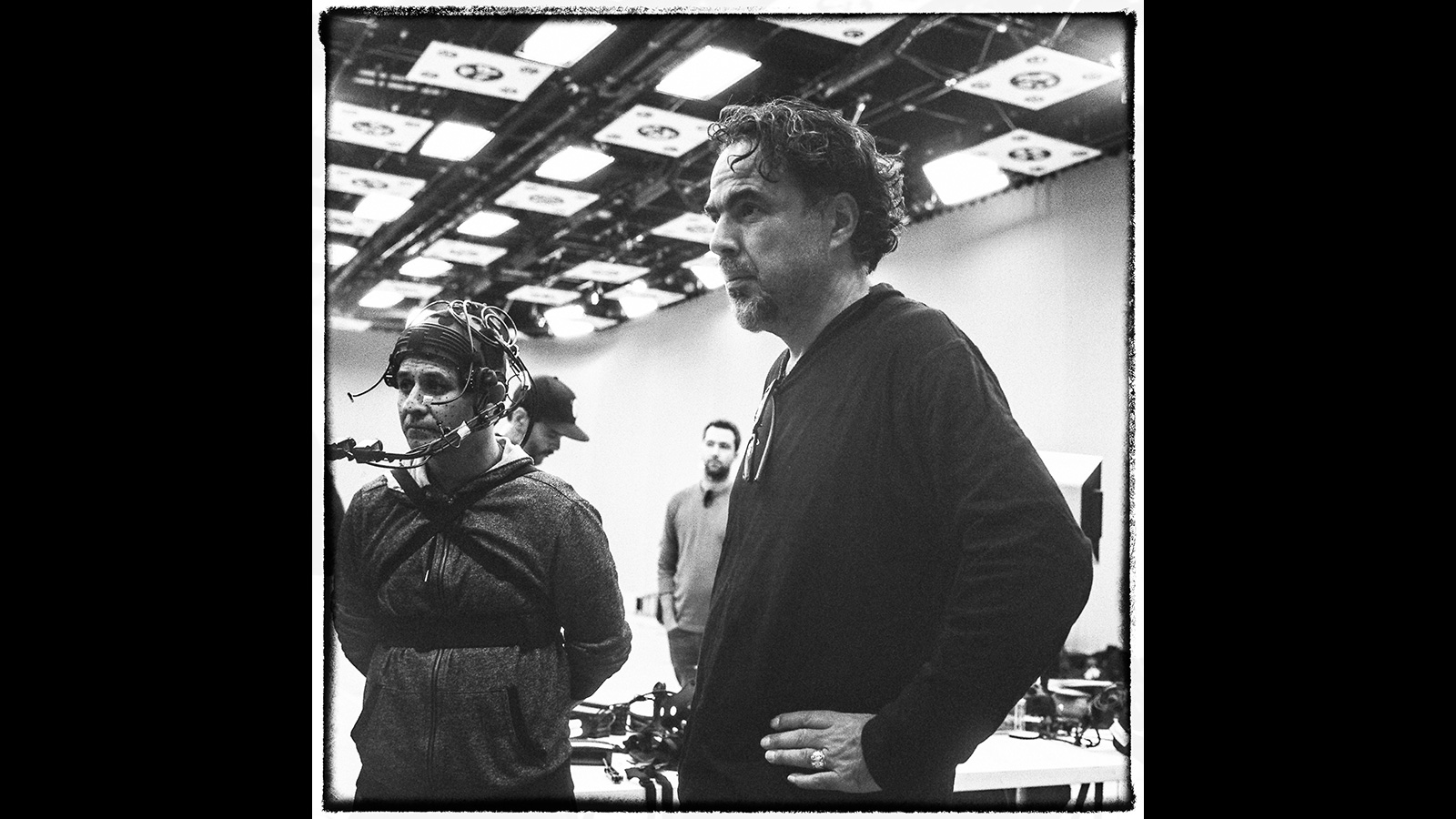Meyer Sound Laboratories, Inc.
Berkeley, CA 94702
United States


Oscar-winning director Alejandro G. Iñárritu’s first venture into virtual reality (VR), entitled “CARNE y ARENA (Virtually Present, Physically Invisible)”, immerses a participant in the experience of refugees and immigrants crossing the US-Mexico border.
To create the levels required for close realism, the custom VR technology deployed for the VR installation includes massive Meyer Sound loudspeakers capable of producing very high sound pressure at frequencies extending below the threshold of hearing.
“My intention was to experiment with VR technology to explore the human condition, in an attempt to break the dictatorship of the frame – within which things are just observed – and claim the space to allow the visitor to go through a direct experience walking in the immigrants’ feet, under their skin, and into their hearts,” says Alejandro G. Iñárritu.
The experimental visual installation CARNE y ARENA is a six and a half minute solo experience that reunites Alejandro G. Iñárritu and three-time Academy Award winning cinematographer Emmanuel Lubezki alongside producer Mary Parent. Sound design for the project was by Martin Hernandez, another frequent Iñárritu collaborator, and Skywalker Sound Director of Sound Design Randy Thom at Skywalker Sound’s studios in Marin County, California. Exhibition system development was supervised by Skywalker Director of Engineering Steve Morris.
CARNE y ARENA is produced and financed by Legendary Entertainment and Fondazione Prada, and was given its world premiere during the 70th Festival de Cannes. It is the very first VR project ever chosen as an Official Selection of the film festival. There will be extended exhibitions at Fondazione Prada in Milan and the Los Angeles County Museum of Art as well as the Tlatelolco Cultural Center in Mexico City.
The exhibition is limited to one person at a time, as the solo participant is free to physically move around a space of about 2,500 square feet to experience the action from different perspectives. The broadband audio is heard on Sony Headphones. The headphones alone, however, are unable to transmit the full experience of the powerful low frequencies, notes John Meyer. “Most headphones cannot reproduce clean, powerful sounds below about 50 Hz,” he explains, “and the visceral effect of the extreme lows involves sensations that are processed by the brain independently of the ears.”
The system for the VR installation utilizes two different Meyer Sound systems. One is the 1100-LFC low-frequency control element, a staple in touring systems for artists as diverse as Celine Dion, Ed Sheeran and Metallica. The other is the new VLFC very low frequency control element, recently in production but with limited availability, that is bolstering the extreme low end on the current Metallica tour. The VLFC powerfully reproduces sound only in the single octave that bridges the threshold of hearing, between 15 Hz and 30 Hz.
“We developed the first versions of the VLFC for NASA to use in vibration testing,” says Meyer. “But we decided to continue development for uses in both cinema and concert applications. We have done extensive double-blind testing here in our own Pearson Theatre. There’s no doubt that people have a different psychological response when we add in or remove that extra octave from 15 to 30 Hz.”
Meyer Sound has a long history of developing deep bass systems for cinema applications. One of the company’s first products, the prototype 650 subwoofer, was built in 1979 at the request of Francis Ford Coppola for the 70mm touring version of Apocalypse Now.

 Microphones
Microphones Speakers
Speakers Acoustic Materials
Acoustic Materials Headphones, Headsets & Earsets
Headphones, Headsets & Earsets
 Cameras - Special Application
Cameras - Special Application Camera Auxiliary Equipment
Camera Auxiliary Equipment Camcorders
Camcorders Camera Controls
Camera Controls
 Protective Cases
Protective Cases Soft Equipment Bags
Soft Equipment Bags AV Software
AV Software Computer Components & Storage
Computer Components & Storage Computer Auxiliary Equipment
Computer Auxiliary Equipment Computers (Professional)
Computers (Professional) Video Conferencing Equipment
Video Conferencing Equipment Conferencing / Discussion Systems
Conferencing / Discussion Systems Telephony & VoIP Systems
Telephony & VoIP Systems Audio Conferencing Equipment
Audio Conferencing Equipment Digital & Streaming Media Distribution Equipment
Digital & Streaming Media Distribution Equipment Content Recording & Storage Systems
Content Recording & Storage Systems Control Panels & Interfaces
Control Panels & Interfaces Control Systems
Control Systems Displays & Monitors
Displays & Monitors Video Walls
Video Walls
 AV Furniture
AV Furniture Stands
Stands AV Lifts
AV Lifts Consoles
Consoles
 Blinds, Shades & Window Coverings
Blinds, Shades & Window Coverings Environmental Management
Environmental Management Lighting Cases & Covers
Lighting Cases & Covers Lighting Power Supplies
Lighting Power Supplies Light Stands & Booms
Light Stands & Booms  Lighting Control Systems
Lighting Control Systems Mounts
Mounts Rigging
Rigging Cables & Connectors
Cables & Connectors Fiber Optic Systems
Fiber Optic Systems Racks
Racks Network Equipment
Network Equipment
 Power Supplies
Power Supplies Power Distribution
Power Distribution Energy Monitoring & Management
Energy Monitoring & Management Whiteboards
Whiteboards Projectors & Accessories
Projectors & Accessories Projection Screens
Projection Screens Markerboards & Easels
Markerboards & Easels
 Audio Production Equipment
Audio Production Equipment Production Recording Equipment
Production Recording Equipment Video Production Equipment
Video Production Equipment Intercom & IFB Systems
Intercom & IFB Systems Surveillance Equipment
Surveillance Equipment Security / Life Safety Call & Paging
Security / Life Safety Call & Paging Signal Processing Systems
Signal Processing Systems Signal Routing / Switching
Signal Routing / Switching Wireless Signal Processing
Wireless Signal Processing Test & Measurement Equipment
Test & Measurement Equipment
